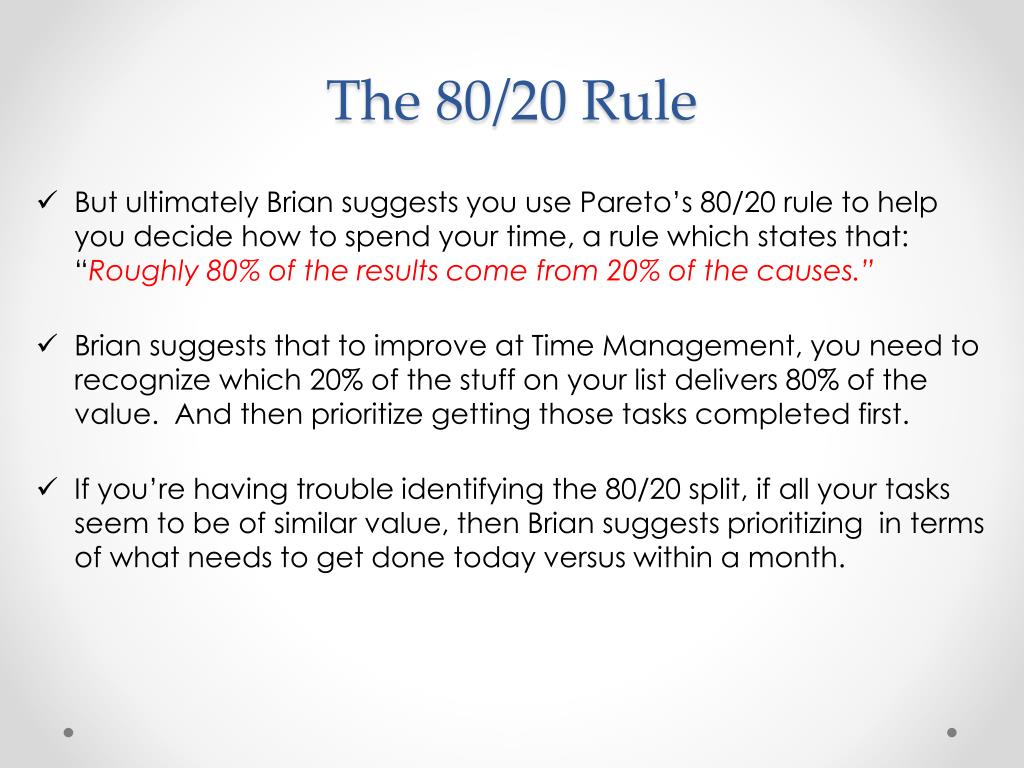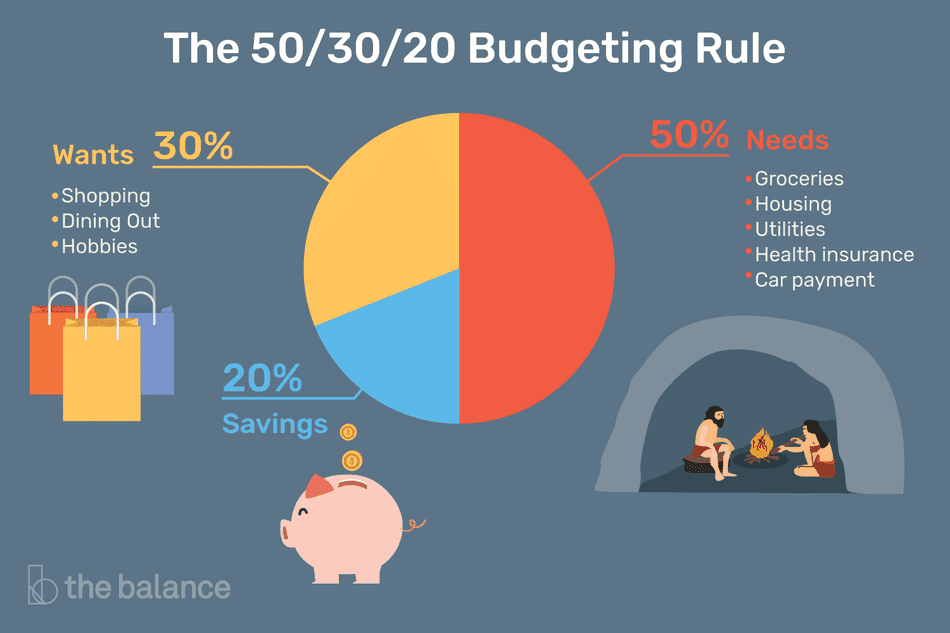For example, of a company’s 100 products, twenty are likely to represent 80% of profits. A concept that suggests 80 percent of a firm's sales are obtained from 20 percent of its customers.

The "8020 Rule" Suggests Gold Will Reach 8,300/ozt in Spring of 2015
The 80/20 rule of marketing is derived from the broader pareto principle concept introduced by italian economist vilfredo pareto in 1906.

The 80 20 rule suggests that. 20% of effort leads to 80% of the results. Applying the 80/20 rule to the business world, it suggests that 80% of a company sales come from 20% of its customers. In 1895, italian economist vilfredo pareto published his findings on wealth distribution after he discovered that 20% of italy’s citizens owned 80% of the country’s wealth.
80% of product sales come from 20% of your products. The 80/20 rule is a helpful concepts for life and business. The pareto principle states that 20 percent of your activities will account for 80 percent of your results, however, it is not a hard and fast mathematical law.
Where did the 80/20 rule come from, and what does it mean? A framework to relate the market segments of potential buyers to products offered or potential marketing actions by an organization. 80% of social shares are from 20% of the social updates.
The principle suggests that since 20 clients are paying 80. The pareto principle, or 80/20 rule, is a theory that people commonly use in business. For ourselves and for our horses.
The pareto principle states that roughly 80% of consequences come from 20% of causes. The pareto principle is also known as the pareto rule or the 80/20 rule. Although common in business and economics, the principle also applies to different spheres of life, including time management.
For example, he theorized that 20% of the defects cause 80% of the problems in most products. Of course, there are plenty more. Pick the top 20% that create the most results and focus on them.
This principle has been proven to be true throughout multiple aspects of our lives. 20:33:23 exit d33 the 80/20 rule suggests that 20% of marketing is wasted 80% of marketing effort is well implemented, but the remaining 20 % is out of control 80 percent of the business comes from 20 percent of the customers it will take 80 percent more effort to get 20% more business d 34. The 80/20 rule is a statistical principle that states 80% of results often come from approximately 20% of causes.
That 20% is made up of the first 10% and the last 10% of the project. Since pareto’s findings, other scholars have applied. Originated from the pareto graph, 80% of profit comes from 20% of items.
Eighty percent of a firm's inventory should be readily available, and twenty percent should be reserved for emergency demand. The 80/20 rule also called the pareto principle, suggests that 20 percent of ones activities will give rise to 80 percent of your results. The 80/20 rule could just as easily be called the 55/3 rule, if 55% of the results were created by 3% of the inputs.
Other names for this principle are the 80/20 rule or the law of the vital few. What does the 80/20 rule allow you to do? The pareto principle states that for many outcomes, roughly 80% of consequences come from 20% of causes (the vital few).
80% of search visits are from 20% of your keywords. 194) the 80/20 rule is a concept that suggests a. Juran took pareto's principle further, applying the 80/20 rule to quality studies.
Does not have to be exactly 80/20. Juran developed the concept in the context of quality control, and improvement, naming it after italian. The basis of the pareto principle states that 80% of results come from 20% of actions.
Eighty percent of a firm's sales are obtained. Other names for this principle are the 80/20 rule, the law of the vital few, or the principle of factor sparsity. It maintains that 20% of the items in a company or system account for 80% of the effect.
Whatever time you have left can be spent on the less productive 80%. The 80 20 rule, otherwise known as the pareto principle, is one of the most helpful concepts for life and time management. 20% of inputs creates 80% of the outputs.
But it can be summarised as: The 80/20 rule, which was first introduced as pareto’s principle in 1941 by american engineer joseph juran, suggests that 20 percent of your. Eighty percent of a firm's first time users will become brand loyal and twenty percent of the firm's first time users will use the product only once.
The key to following the 80 20 rule is to. Not all transactions are equally important. The 80/20 rule suggests that the majority of things have an unequal.
This suggests that focusing resources where crime is concentrated will yield the greatest preventive benefits. Today, project managers know that 20% of the work consumes 80% of the time and resources. It aids in the sorting and prioritization of the most critical factors for the best results.
This principle has since been applied in a. Involves a detailed breakdown and analysis of customer. This is because the 80/20 rule is helpful in determining where you can focus your efforts to maximize your output.
While the 80/20 rule applies to almost every industry, the pareto principle is commonly used in business and economics. The 80/20 rule suggests you look through all the tasks you normally could perform. A priority tool to determine resource allocation for limited resources.

PPT Brian Tracy, Time Management and the 80/20 Rule PowerPoint
.png)
Tail spend goes beyond the typical 80/20 rule Future of Sourcing

How to Apply the 80/20 Rule at Work 4 Useful Tips M3S Total Talent

